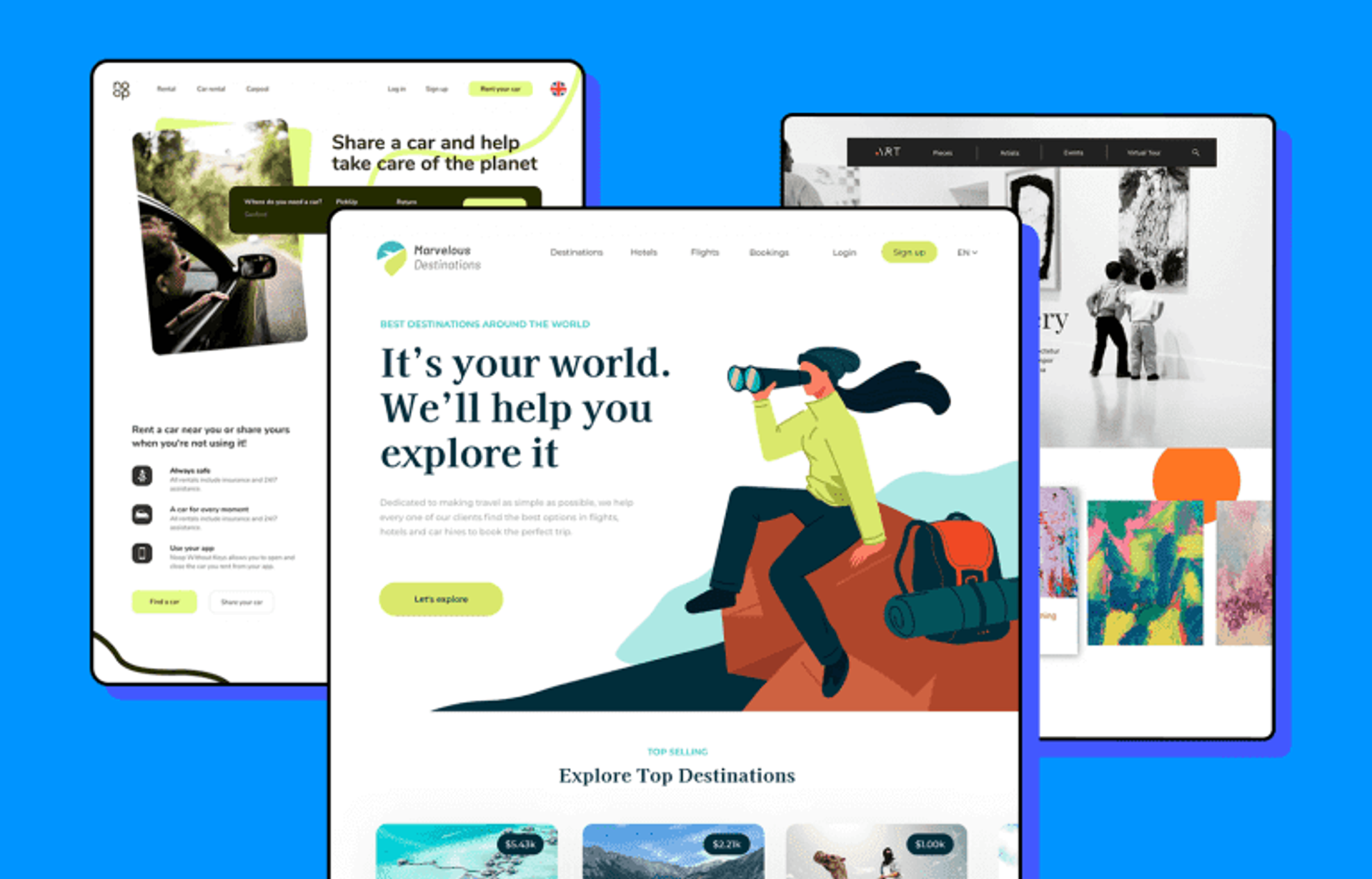Blitz News Digest
Stay updated with the latest trends and insights.
Web Design Trends That Are Here to Stay
Discover the must-know web design trends that are reshaping the digital landscape and are here to stay! Don't miss out on this savvy guide.
5 Timeless Web Design Trends That Will Define the Future
As we look toward the future of digital experiences, certain web design trends continue to emerge as timeless essentials. **Minimalism** is one such trend that remains at the forefront. By removing unnecessary elements and focusing on essential content, minimalist designs enhance user engagement and make navigation intuitive. Furthermore, responsive design has transitioned from being a trend to a necessity, as more users access the web through various devices. A website's ability to adapt seamlessly across desktops, tablets, and smartphones not only improves user experience but also boosts SEO rankings.
Another significant trend shaping the future of web design is the use of **bold typography**. Strong, expressive fonts enhance brand identity and can convey messages more effectively than images alone. Coupled with this, the integration of dark mode has gained popularity, appealing to users who prefer a softer screen experience. Finally, the growing importance of microinteractions—those subtle animations and feedback mechanisms that occur during user interactions—ensures that users remain engaged and informed as they navigate your site, making their online journey more interactive and enjoyable.

Why Minimalism in Web Design Is More than a Trend
Minimalism in web design transcends mere aesthetic appeal; it's a philosophy that prioritizes functionality and user experience. By stripping away unnecessary elements, minimalist design focuses on what truly matters: content. This approach not only enhances readability but also streamlines navigation, which is crucial for retaining visitors. As users encounter fewer distractions, their attention is captured by the site's core messages, making it easier for brands to communicate effectively.
Moreover, minimalist design promotes faster loading times and improved mobile responsiveness, essential factors in today's digital landscape. With more users accessing websites on various devices, having a clean, uncluttered layout ensures that a site is both visually appealing and practical. In essence, minimalism in web design is not just a fleeting trend; it is a strategic choice that aligns with user needs and technological advancements, paving the way for a more intuitive online experience.
How to Incorporate Dark Mode in Your Web Design Strategy
Incorporating Dark Mode in your web design strategy is essential in today’s digital landscape. First, understand your audience's preferences; many users appreciate the eye strain relief that dark themes provide, especially when browsing in low-light conditions. Start by offering a toggle feature that allows users to switch between light and dark modes effortlessly. This not only enhances user experience but also demonstrates your commitment to accessibility.
Next, consider the color palette and contrast ratio when designing for Dark Mode. Use softer, muted colors for backgrounds and ensure that text remains highly readable. A well-thought-out Dark Mode implementation can significantly improve aesthetics and usability. Test your designs across different devices to ensure consistency, and remember to gather user feedback; this can lead to valuable insights and potential adjustments for enhancements.